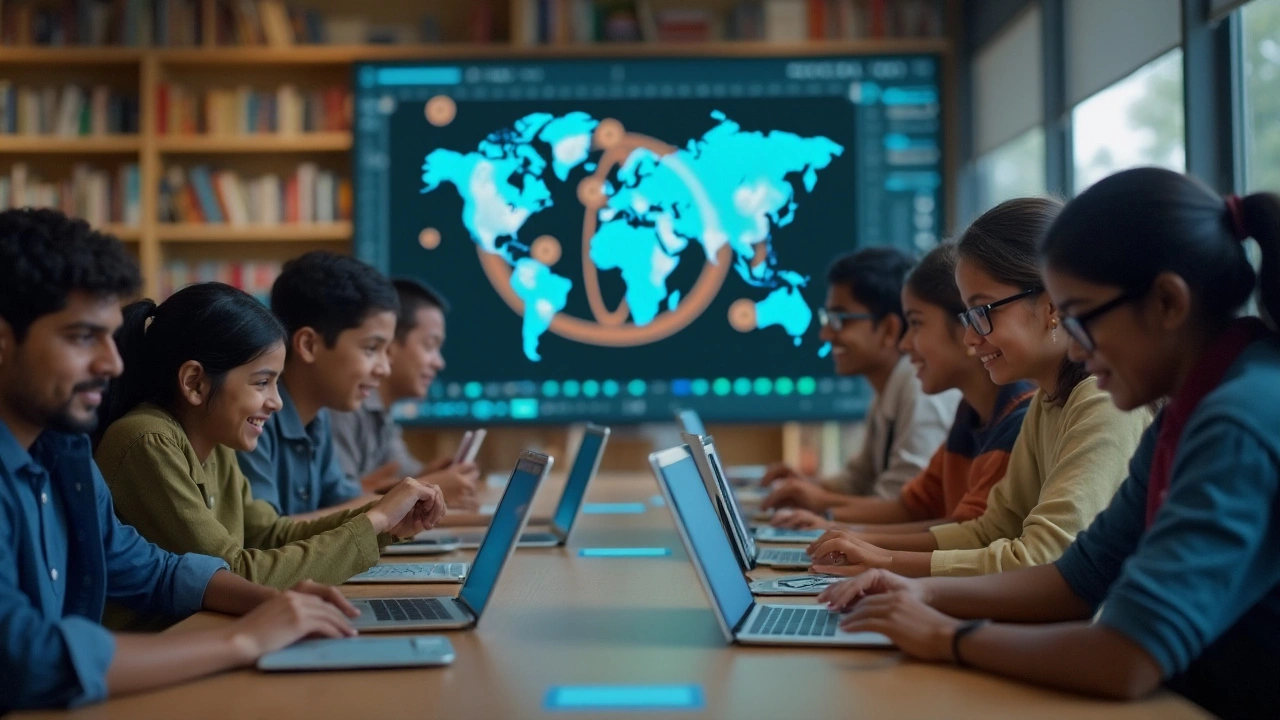Digital Learning Made Simple: How to Learn Anywhere, Anytime
Digital learning lets you study from a coffee shop, your bedroom, or a park bench. All you need is a device and internet. This freedom means you can fit study around work, family, or hobbies without missing a beat.
Why Digital Learning Works So Well
First, you control the pace. If a concept feels tough, you can pause, replay, or skip ahead. Second, you get access to top teachers from around the world, not just the ones in your city. Third, many platforms offer free certificates or low‑cost options, so you can start without breaking the bank.
Our own post "Why Distance Learning Wins" shows how flexible schedules cut commuting time and save money. When you combine that with free tools like YouTube tutorials, open‑source textbooks, and community forums, learning becomes cheaper and faster.
Choosing the Right Online Course
Start by defining a clear goal: do you want a new job skill, a language boost, or a hobby upgrade? Look for courses that match that goal and check three things – course length, practical projects, and reviews from real learners.
For beginners, the "Best Online Courses for Beginners in 2025" guide breaks down top picks by skill. It compares pricing, support, and how quickly you can earn a certificate. Pick a course that offers hands‑on practice, because doing beats just watching.
Once you enroll, set a small daily habit. Even 20 minutes of focused work beats long, irregular sessions. Use a simple planner or a phone reminder to keep the momentum.
Don’t forget the community. Join the course’s discussion board or a related Facebook group. Asking questions and helping others locks in knowledge faster.
Remember, digital learning isn’t just about watching videos. Pair lessons with real‑world tasks – write a short essay after an English module, build a tiny project after a coding lesson, or solve a practice test after a NEET prep video. This bridges theory and practice.
In short, digital learning gives you flexibility, access, and affordable options. Pick a goal, choose a beginner‑friendly course, set a daily habit, and stay active in the community. Follow these steps and you’ll see real progress without leaving home.
E-learning has changed how we study, but it's not always easy. Discover the real problems behind digital learning and get practical tips to make your online study sessions better.
Get the inside scoop on building your own online eLearning platform! Discover tips, real-world advice, and step-by-step instructions for eLearning website success.
Curious about which online platforms are dominating the e-learning world in 2025? This article pinpoints the top four, breaking down what makes each stand out. You'll learn what real people are saying, what features to look for, and how prices compare. Whether you want to boost your career or just pick up a new skill, there's something here for you. Get ready to find the platform that actually fits your learning style and goals.
Google Classroom has become an integral tool in education, paving the way for a digital transformation that enhances learning experiences. As a platform, it simplifies tasks for teachers and students alike, facilitating efficient management of assignments and communication. With its integration into the larger Google Suite, it offers a seamless educational environment that stretches beyond traditional learning constraints. By examining its functions and user-friendliness, we can better understand its role in modern e-learning.
Is eLearning the same as online learning? While they might sound alike, eLearning and online learning have distinct differences. This article dives into the unique characteristics of each format, the technological requirements, and how they cater to different learning styles. Whether you're a student or educator, knowing the differences can help you make informed decisions. Discover how each approach can be used effectively to enhance educational outcomes.
Digital learning platforms have transformed education by offering flexible, accessible online experiences. From massive open online courses (MOOCs) to specialized skill-building sites, these platforms cover various subjects for different learning needs. Users can find platforms focusing on interactive learning, peer collaboration, and personalized content. Understanding these options helps learners choose the right path to education. This article explores popular e-learning platforms, highlighting their features and what makes them stand out.
eLearning has transformed modern education by allowing learners to access knowledge from anywhere, at any time. This article dives into how eLearning platforms operate, discussing their technologies, the benefits they bring, and potential challenges. It covers how these platforms enhance engagement, offer personalized learning experiences, and prepare students for a tech-driven world. Tips for choosing the right eLearning tool are also included to help newcomers navigate this innovative educational landscape.
eLearning, a term encompassing a broad range of educational experiences delivered through digital platforms, has become an essential part of modern education. It allows learners from all over the world to access information and participate in courses with flexibility and convenience. With various names such as online education, digital learning, and virtual classrooms, understanding the nuances of eLearning can enhance its adoption and effectiveness. This article explores the roots and evolution of eLearning terminology and provides tips on how to effectively navigate the eLearning landscape.







